Heterodyne Angle Deviation Interferometry in Vibration and Bubble Measurements
Abstract
:1. Introduction
2. Materials and Methods
3. Experimental Results
3.1. Vibration Measurement
3.2. Bubble Measurements
4. Discussion
5. Conclusions
Acknowledgments
Author Contributions
Conflicts of Interest
References
- Massia, N.A.; Nelson, R.D.; Holly, S. High-performance real-time heterodyne interferometry. Appl. Opt. 1979, 18, 1797–1803. [Google Scholar] [CrossRef] [PubMed]
- Stetson, K.A. Method of vibration measurements in heterodyne interferometry. Opt. Lett. 1982, 7, 233–234. [Google Scholar] [CrossRef] [PubMed]
- Estler, W.T. High-accuracy displacement interferometry refin air. Appl. Opt. 1985, 24, 808–815. [Google Scholar] [CrossRef] [PubMed]
- Chien, P.Y. Two-frequency displacement measurement interferometer based on a double-heterodyne technique. Rev. Sci. Instrum. 1991, 62. [Google Scholar] [CrossRef]
- Charette, P.G.; Hunter, I.W.; Brenan, C.J.H. A complete high performance heterodyne interferometer displacement transducer for microactuator control. Rev. Sci. Instrum. 1992, 63. [Google Scholar] [CrossRef]
- Bobroff, N. Recent advances in displacement measuring interferometry. Meas. Sci. Technol. 1993, 4, 907–926. [Google Scholar] [CrossRef]
- Su, D.C.; Chen, C.D.; Chiu, M.H. Simple two-frequency laser. Prec. Eng. 1996, 18, 161–163. [Google Scholar] [CrossRef]
- Ngoi, B.K.A.; Venkatakrishnan, K.; Tan, B. Laser scanning heterodyne-interferometer for micro-components. Opt. Commun. 2000, 173, 291–301. [Google Scholar] [CrossRef]
- Chiu, M.H.; Chen, W.C.; Tan, C.T. Small displacement measurements based on an angular-deviation amplifier and interferometric phase detection. Appl. Opt. 2015, 54, 2885–2890. [Google Scholar] [CrossRef] [PubMed]
- Raether, H. Surface plasmons on smooth and rough surfaces and on gratings; Springer: Heidelberg, Germay, 1988; pp. 4–29. [Google Scholar]
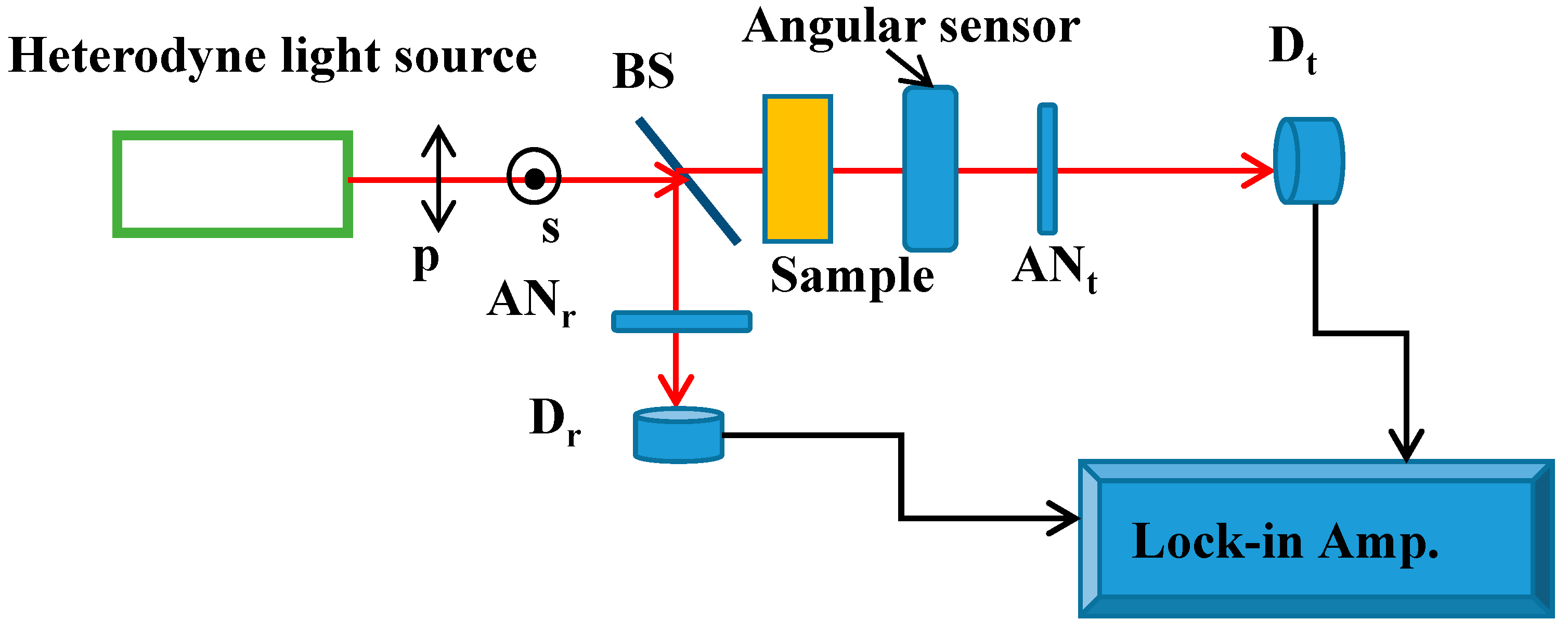
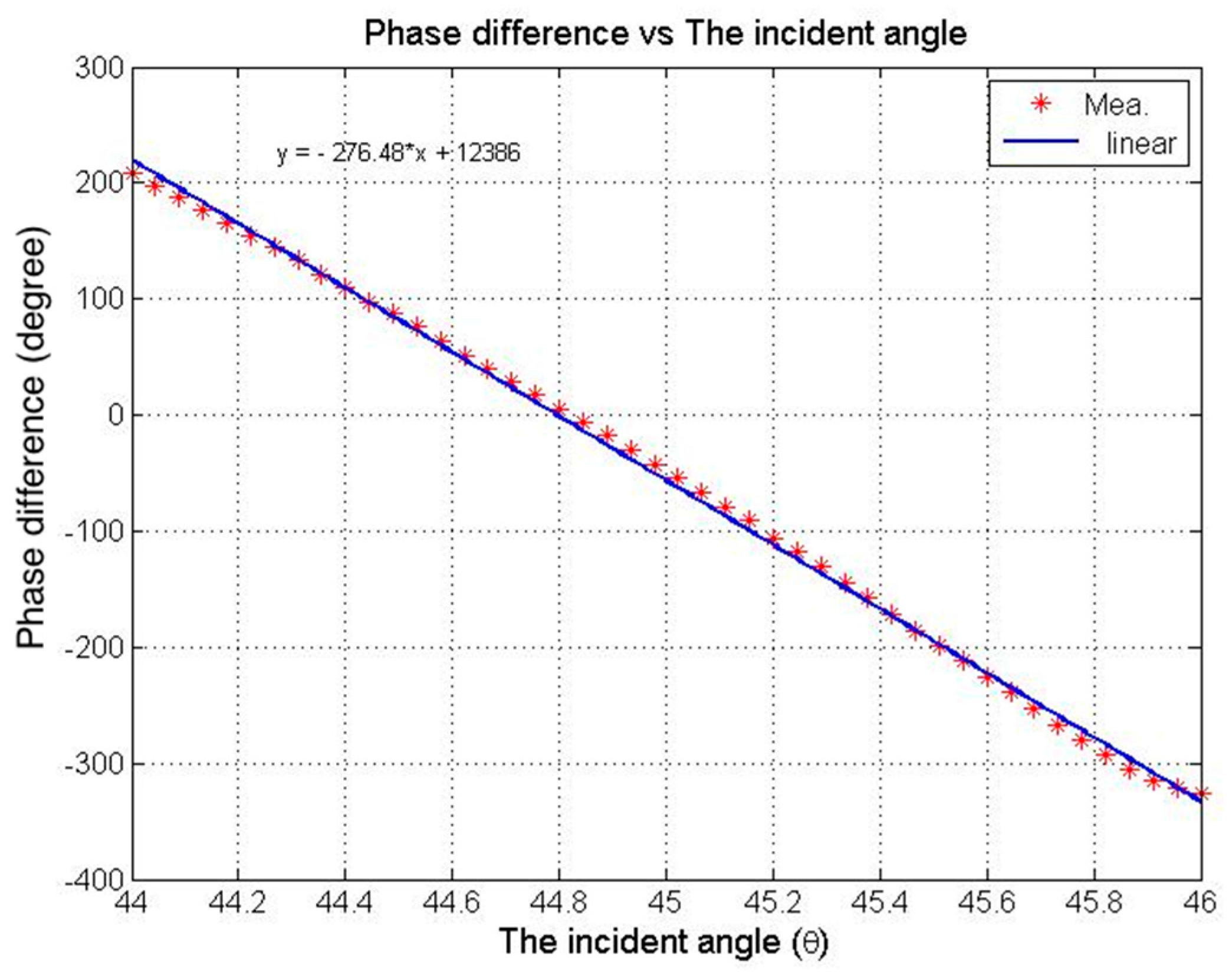
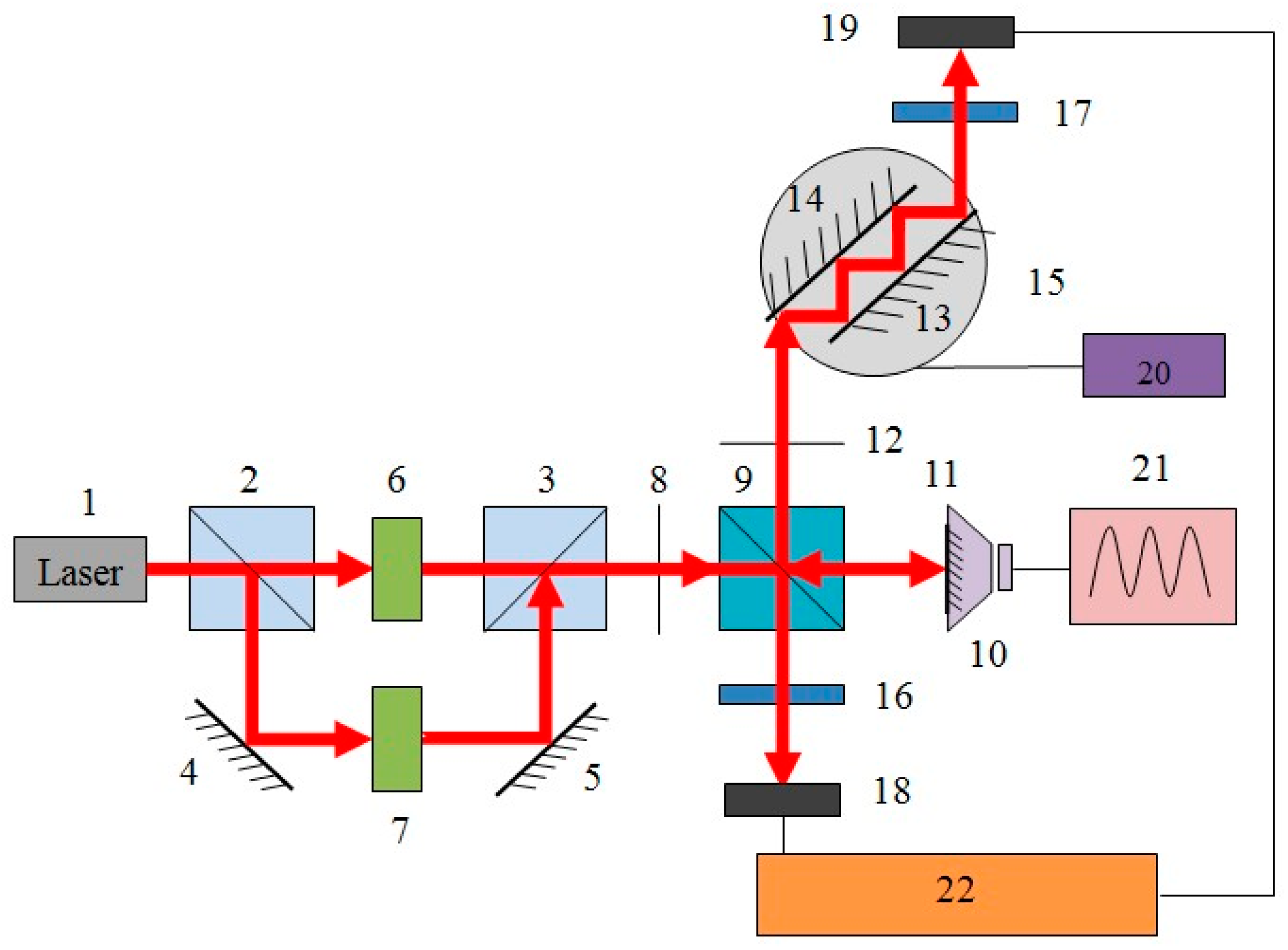

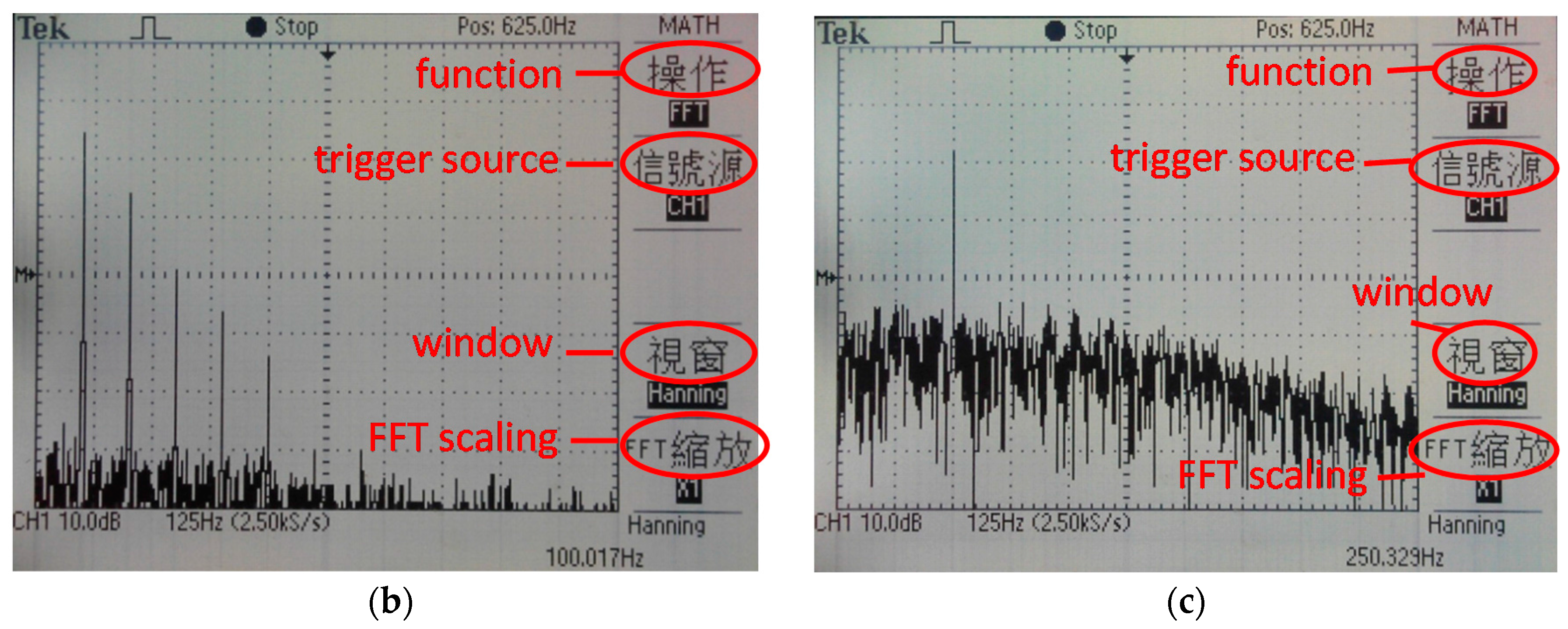

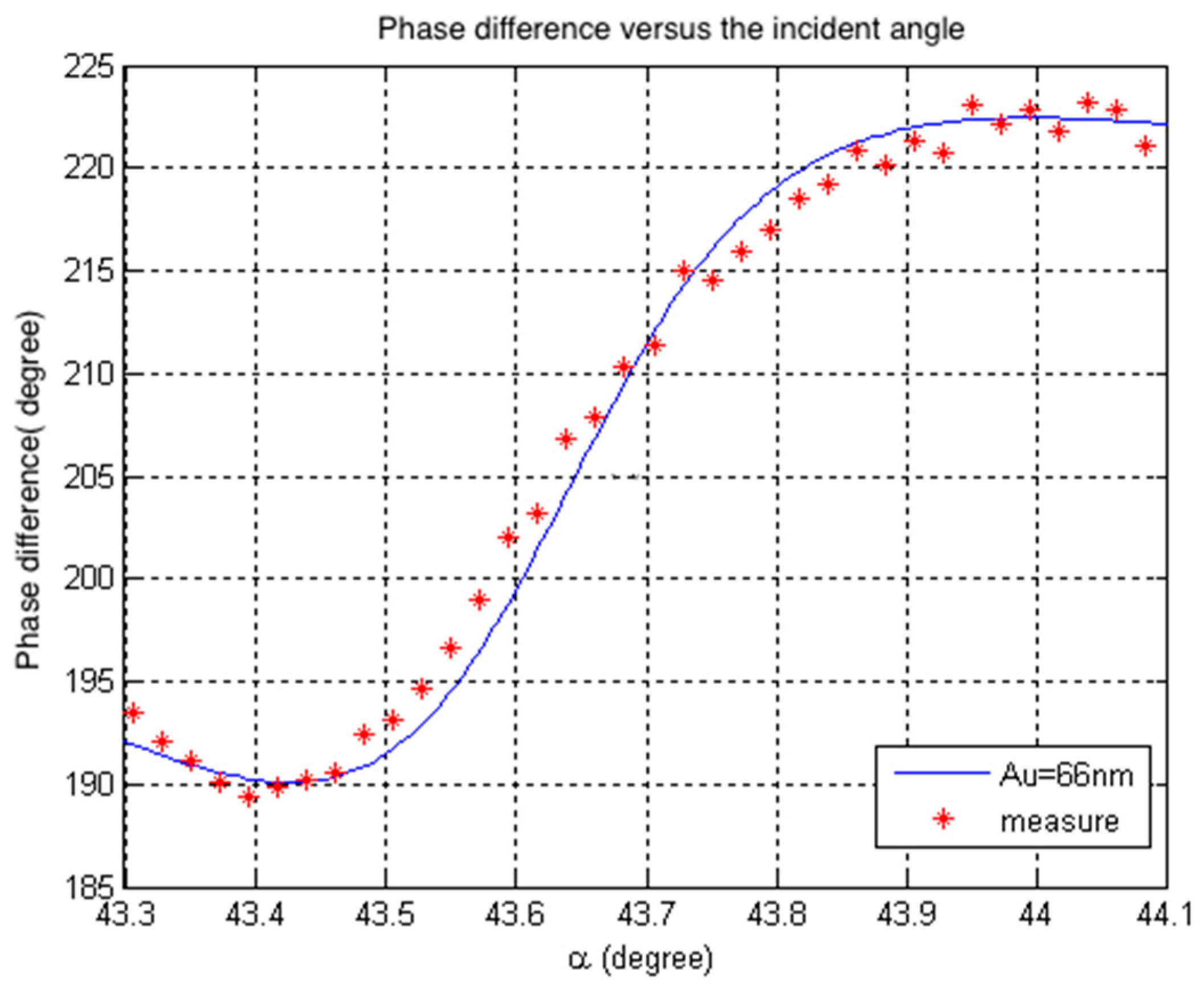
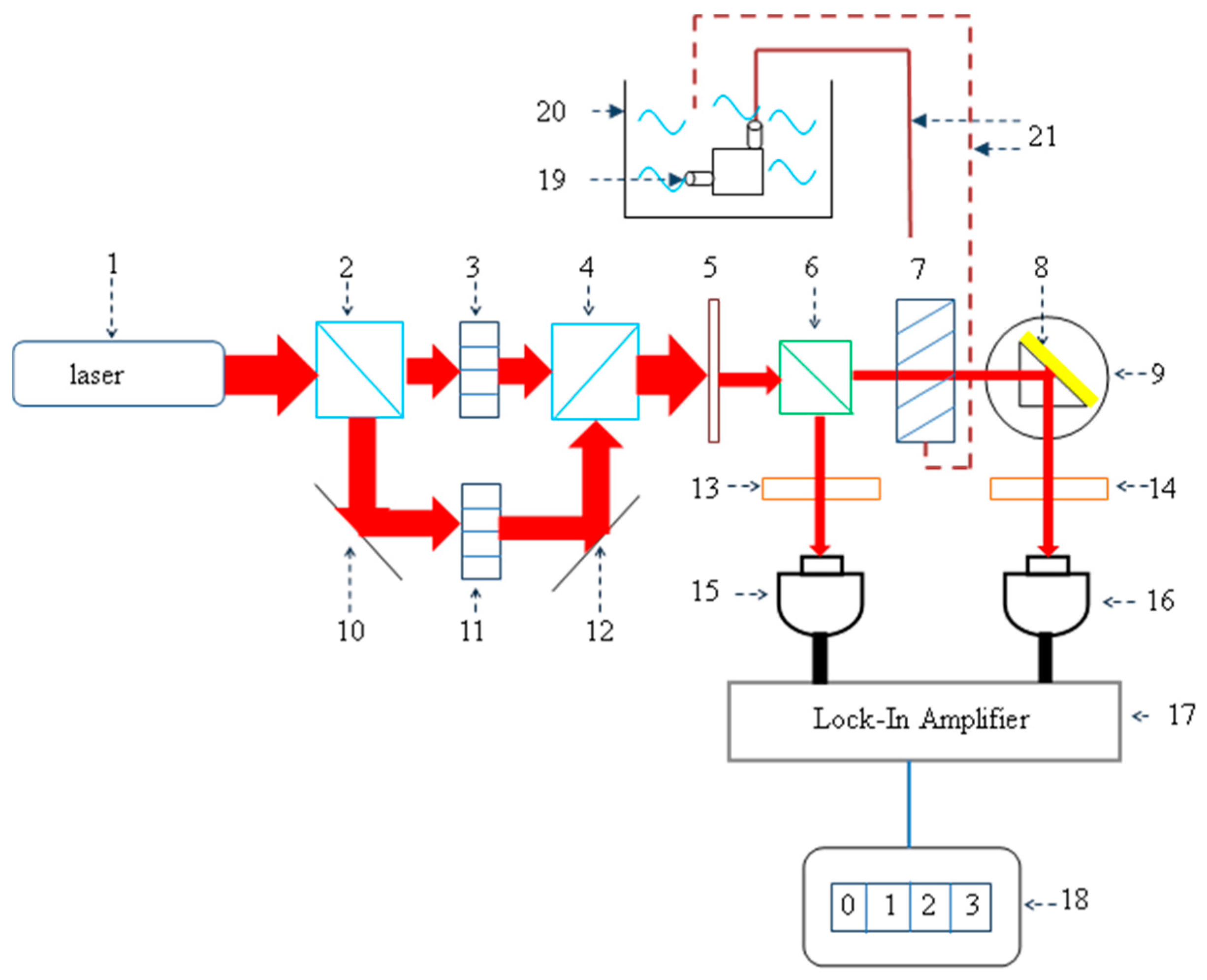

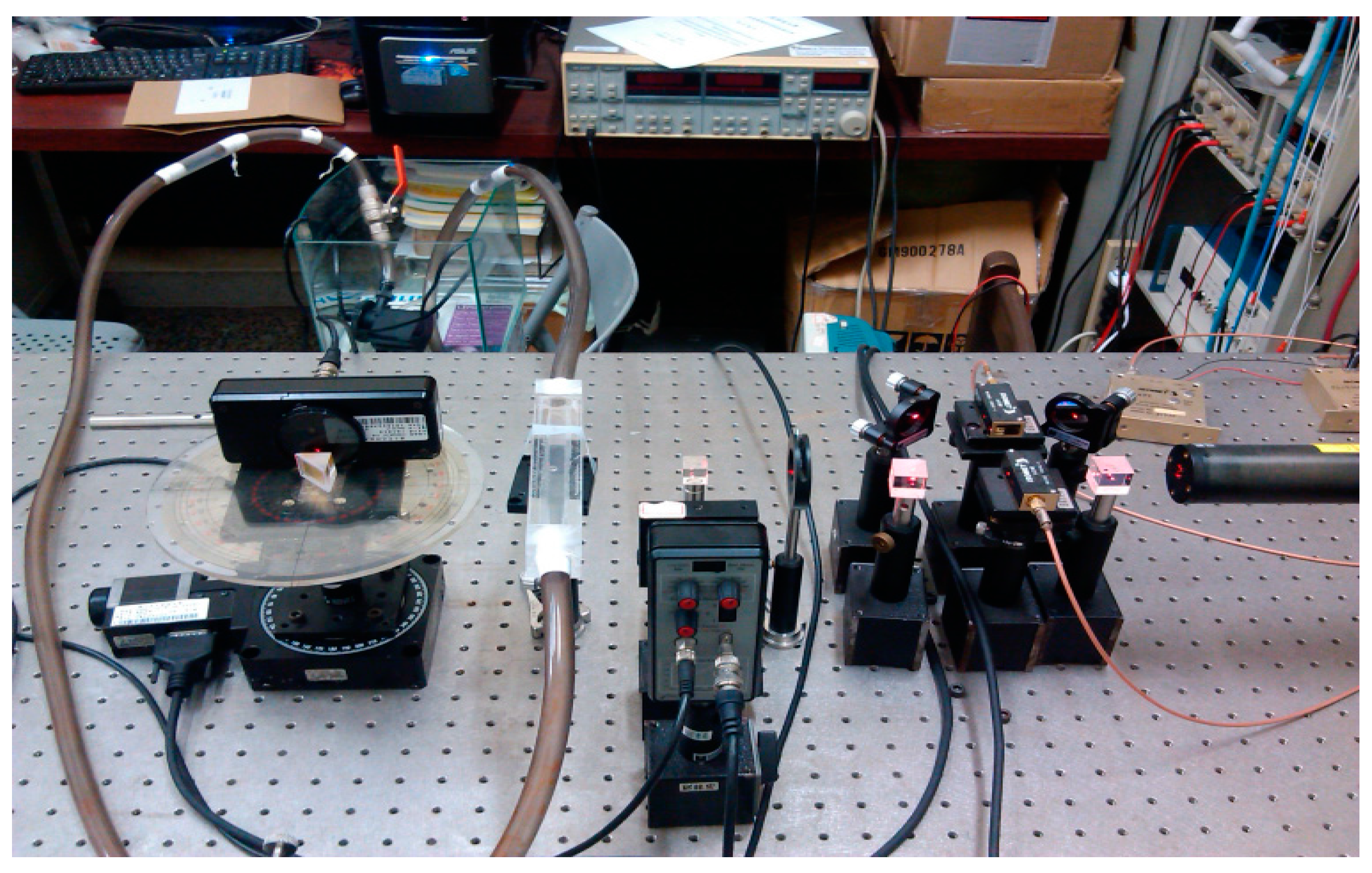
| Sample | The Velocity of Water Flow (cm/s) | Relative Percentage Error (%) | Number of Bubbles/min |
|---|---|---|---|
| Bubbles | 9 | 0.63 | 12.9 |
| 15 | 0 | 5.7 | |
| 18 | 0 | 26.8 | |
| 20.5 | 0.28 | 107.8 |
| Sample | The Velocity of Water Flow (cm/s) | Minimum Size (mm) |
|---|---|---|
| The transparent particle | 2 | 0.2 |
| 60 | 0.6 |
© 2016 by the authors; licensee MDPI, Basel, Switzerland. This article is an open access article distributed under the terms and conditions of the Creative Commons Attribution (CC-BY) license (http://creativecommons.org/licenses/by/4.0/).
Share and Cite
Chiu, M.-H.; Shen, J.-Z.; Huang, J.-M. Heterodyne Angle Deviation Interferometry in Vibration and Bubble Measurements. Appl. Sci. 2016, 6, 205. https://doi.org/10.3390/app6070205
Chiu M-H, Shen J-Z, Huang J-M. Heterodyne Angle Deviation Interferometry in Vibration and Bubble Measurements. Applied Sciences. 2016; 6(7):205. https://doi.org/10.3390/app6070205
Chicago/Turabian StyleChiu, Ming-Hung, Jia-Ze Shen, and Jian-Ming Huang. 2016. "Heterodyne Angle Deviation Interferometry in Vibration and Bubble Measurements" Applied Sciences 6, no. 7: 205. https://doi.org/10.3390/app6070205







